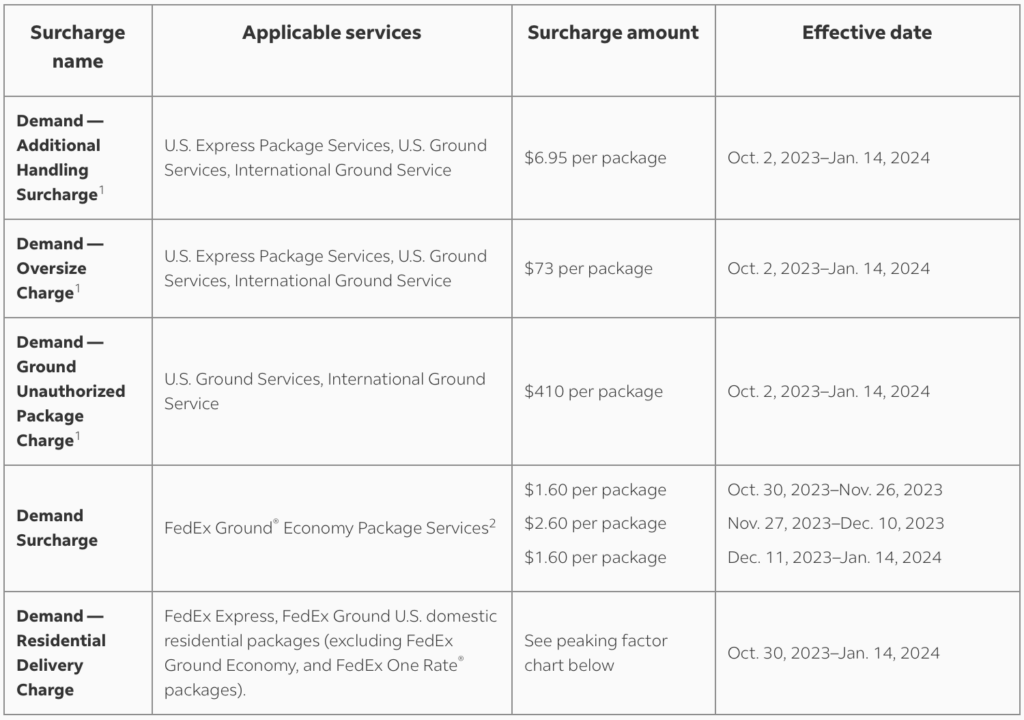FedEx and UPS introduced peak season surcharges as a way to compensate for the need to hire more workers and buy or rent additional machinery to handle the rapid spike in volume just before the end of year holiday season.
Initially this peak season lasted just over a month. In 2018 it started in mid-November and lasted until the third week of December, approximately 35 days. During this time, an additional peak surcharge was tacked onto other surcharges including additional handling, oversize and residential. Once the peak season was over, the additional peak surcharge was no longer applied.
Times have changed however, and carriers have now renamed the peak surcharge to “demand surcharge” which is currently applied for the entire year but at varying rates. A lower demand surcharge is applied to from the middle of January until October and then increases until the middle of January the following year for the cycle to start all over again.
See below for a breakdown of FedEx and UPS’ current demand surcharge amounts.
To learn how to reduce the impact of demand surcharges on your parcel spend, contact our parcel experts.






